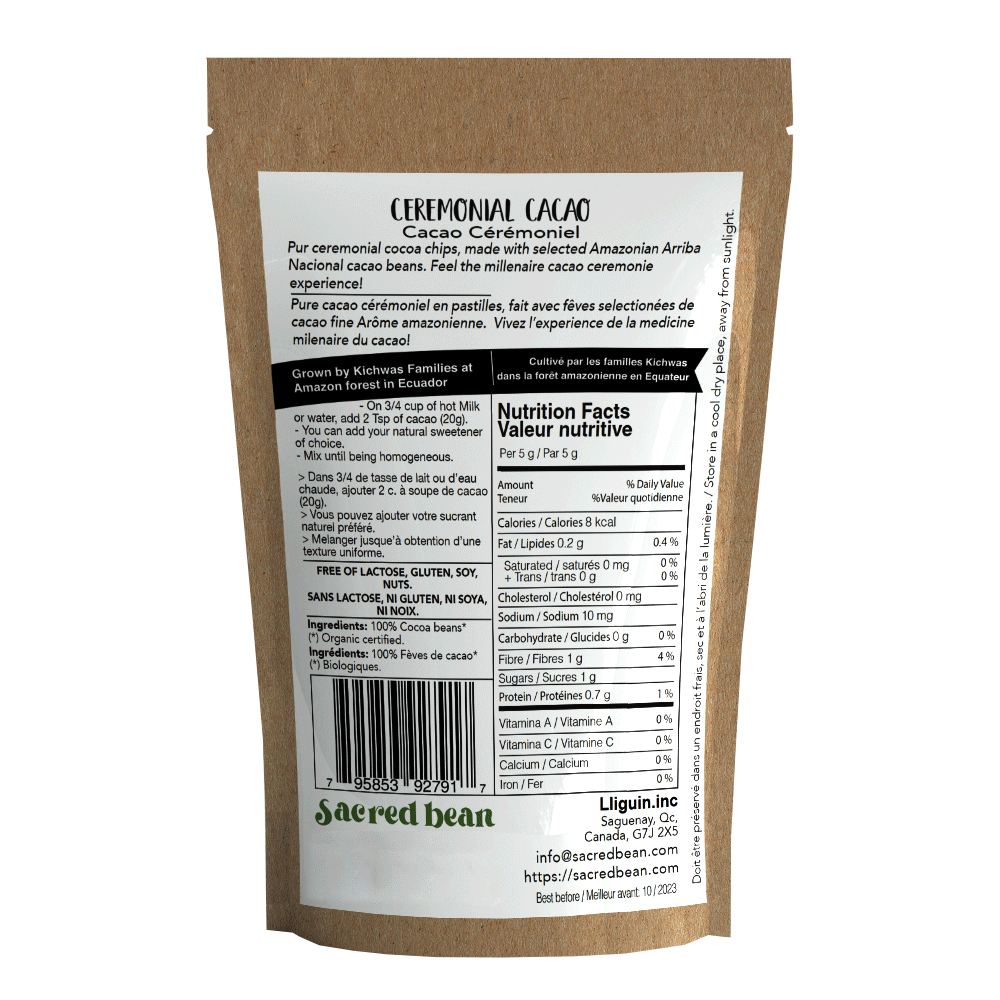Cacao History

Cacao is a powerful medicine that helps us connect with our environment, body, mind, cultural roots, and resonate with the rainforest. It is also an instrument that allows us to honor nature and its immense power, helping us regain the inner balance often overshadowed by the routine and busyness of modern life. Cacao is a pathway to find a deeper connection with our heart chakra and our inner self.
The scientific name for the cacao tree is Theobroma cacao. Theobroma in greek means "food of the gods". The word "cacao" is believed to come from the ancient languages, which were likely spoken by the Olmecs.
The Olmecs were an ancient civilization in Central America that lived around 1400 BC to 400 BC. They are considered one of the oldest groups in the region and played a big part in shaping the cultures there. In the Yucatec Maya language, "kaj" means bitterness, and "kab" means juice. However, experts think that "cacao" changed in how it sounded over time, from "cacaoatl" to what we say today, cacao. Cacao takes us on a journey through time and space to South America, specifically to the east of the grand Andes mountains. Cacao is like a special plant treasure that has left a big mark on human history.
The cacao plant grows wild in South America, in the Amazon rainforest. The oldest proof of cacao was found in southern Ecuador, and it dates back to 5500 BC. The Kichwa people, who lived there, were already discovering the hidden secrets inside cacao beans. A big surprise comes up: this old-time fruit was being used many years before the tree itself was taken care of and sent to different parts of the world.
This amazing discovery takes us on a time-travel journey, connecting us with old cultures that loved cacao. From the Maya, who lived in places like Mexico, Guatemala, and Honduras, to the Incas, who had a big empire covering areas like Peru, Ecuador, Colombia, and Bolivia, everyone saw how special cacao beans were. The Aztecs, in what we now call southern Mexico, were also part of this story.
Cacao beans weren't just normal ingredients; they had a special value that was more than just money or rituals. More than just giving energy to people, cacao connected rituals and spiritual practices and was even part of trading. Cacao beans were like money in markets, and they saw lots of deals happening in the times of the old civilizations. But the biggest meaning came in rituals: cacao became like a bridge between people and gods, helping people connect with the spiritual world. When they drank xocoatl, a cacao drink, they didn't just satisfy their thirst; they also brought out the spiritual and sacred side of things. In ceremonies, cacao became symbols of specialness and unity, going beyond the normal limits of time.
Cacao wasn't limited to ancient civilizations. It all began with Christopher Columbus, who, in his search for routes to the spices of the Far East, discovered the wonders of cacao in Nicaragua in 1502. However, it was Hernán Cortés who, after leading an expedition to the Aztec Empire in 1519, returned to Spain in 1528 with the recipe for 'xocoatl,' a cacao beverage used in rituals to revitalize the spirit and body. Initially, this drink didn't generate much enthusiasm, but when sugar was added, it transformed its flavor and paved the way for its acceptance in the Spanish courts and later throughout Europe.
Over time, Europe developed an insatiable taste for chocolate, leading to a demand that needed to be met. Thus, cacao traveled across seas and trade routes, colonizing new territories and establishing itself in three main producing regions: Asia, Africa, and Latin America, including the Caribbean. The history of cacao, which began as an ancient treasure, flourished in a globalized world where chocolate became a universal pleasure, and cacao culture became a link that connected continents and eras, perpetuating the magic of rituals and the profound connection between cacao and spirituality.
At Sacred Bean, we firmly believe that if Christopher Columbus and Hernán Cortés had tasted Ecuadorian Rainforest Ceremonial Cacao, they would have been captivated by its flavor, aroma, and texture. It's likely they wouldn't have needed to add anything else, like sugar, which is commonly added to some chocolates in today's market. The history of cacao and chocolate as we know it today might have been very different.
References: https://www.icco.org/growing-cocoa/
Premium Criollo Fino de Aroma CEREMONIAL CACAO












